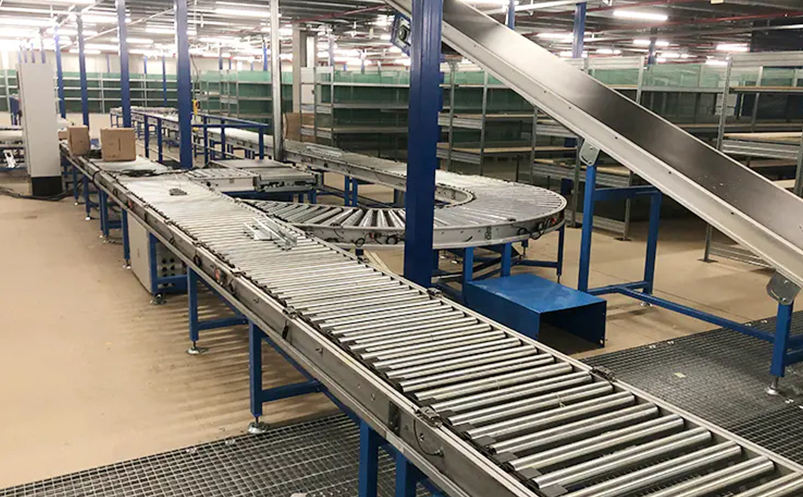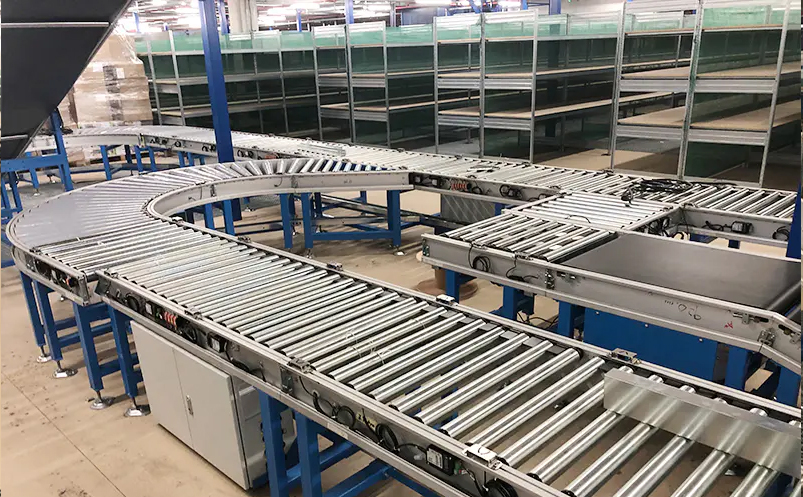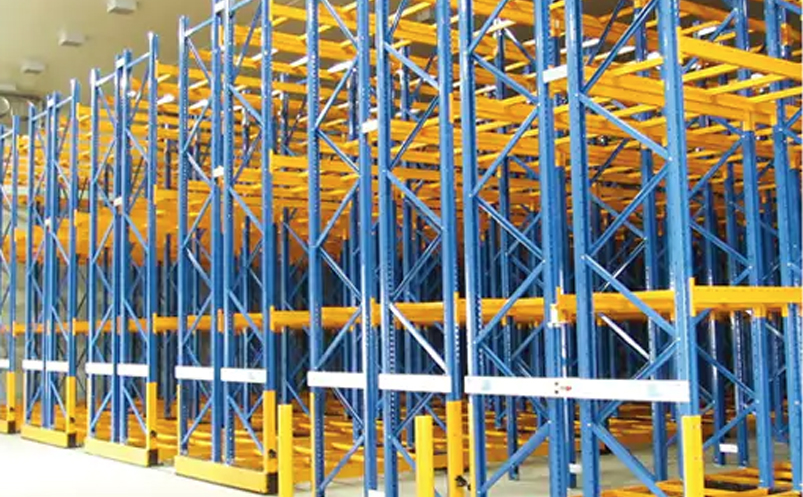Belt conveyor is the arteries of countless industries. From mining mountains of ore to packaging delicate food products, they tirelessly move mountains of material with seemingly simple grace. But beneath that continuous loop of belting lies a complex interplay of components, each critical to overcoming inertia, friction, and the sheer weight of the load. Understanding what truly keeps a belt conveyor moving isn’t just technical knowledge; it’s the key to maximizing uptime, efficiency, and the lifespan of a vital asset.
1. The Prime Mover: The Drive System – Where Motion Begins
At the heart of every conveyor is its drive system. This is the muscle, converting electrical energy into the rotational force needed to overcome the significant conveyor belt resistance:
The Motor: The workhorse. Electric motors (AC induction being most common) provide the rotational power. Size (HP/kW) is meticulously calculated based on the total conveyor power requirements – factoring in belt length, lift height, material weight, friction coefficients, and desired speed.
The Gearbox (Reducer): Motors typically spin too fast and lack the torque needed to start a heavily loaded belt. The gearbox steps in, reducing the motor’s output speed while dramatically multiplying its torque. Choosing the correct gear reduction ratio is crucial for achieving the desired belt speed while providing enough starting force. Gearbox lubrication maintenance is non-negotiable for longevity.
Drive Couplings: These connect the motor shaft to the gearbox input shaft and the gearbox output shaft to the drive pulley shaft. They transmit torque while accommodating minor misalignments and absorbing shock loads. Coupling alignment is critical to prevent premature wear and vibration.
The Drive Pulley: This is where rubber meets the road (or belt meets the pulley). The drive pulley is the primary point where rotational force is transferred to the belt. Its surface is often lagged – covered with a rubberized, grooved, or ceramic material – to drastically increase pulley-to-belt friction coefficient. Without sufficient friction, the belt slips, generating heat, wear, and lost motion. Proper drive pulley lagging condition is paramount for reliable power transmission.
2. The Essential Tension: Take-Up Systems – Maintaining Grip
Imagine trying to push a rope. It doesn’t work. A belt conveyor needs constant tension to wrap snugly around the drive pulley, creating the friction necessary for traction. This is the job of the take-up system. It ensures consistent conveyor belt tensioning throughout operation, compensating for belt stretch, temperature changes, and load variations. Types include:
Gravity Take-Up: Uses weights (often large concrete blocks or steel weights) suspended from the take-up carriage. Provides constant, automatic tension and is highly reliable but requires significant vertical space. Gravity take-up maintenance primarily involves keeping pulleys aligned and tracks clear.
Screw Take-Up: Uses threaded rods manually adjusted with a wrench. Simple and compact but requires frequent manual intervention as the belt stretches and loads change. Prone to under or over-tensioning if neglected. Screw take-up adjustment procedures must be followed diligently.
Hydraulic Take-Up: Uses hydraulic cylinders to apply and maintain tension automatically. Offers precise control and compensates dynamically, ideal for long or heavily loaded conveyors. Requires hydraulic power and more complex hydraulic take-up system troubleshooting.
Winch Take-Up: Similar to gravity but uses a winch and cable instead of direct weights. Allows for greater travel distance. Needs robust winch mechanism upkeep.
Insufficient tension causes belt slip at the drive, leading to damage. Excessive tension puts undue stress on the belt, splices, bearings, and structure, accelerating wear and increasing conveyor power consumption. Finding and maintaining the correct belt tension setting is a critical operational parameter.

3. The Rolling Foundation: Idlers and Frames – Minimizing Resistance
While the drive provides the force and tension enables grip, the belt and its load must actually move. This is where minimizing rolling resistance becomes crucial. Enter the idler rolls (or rollers) and their supporting structure.
Idler Rolls: These are the countless cylindrical rollers that support the belt along its entire length, on both the carrying (top) and return (bottom) sides. Their primary job is to:
Support the Load: Prevent the belt from sagging excessively under the weight of the material.
Reduce Friction: Allow the belt to roll over them with minimal resistance compared to sliding friction. Idler roll bearing selection (sealed, pre-lubricated) is vital for low friction and long life.
Shape the Belt: Carry idlers are typically troughed (angled) to form a deeper channel, increasing capacity and preventing spillage. Return idlers are usually flat.
Types Matter: Different idlers serve specific purposes:
Carrying Idlers: Troughed sets (usually 20°, 35°, or 45°) form the belt into a trough. Impact idlers (closely spaced, often with rubber discs) absorb the shock of loading.
Return Idlers: Support the empty belt on its way back. Can include V-return idlers to help center the belt.
Training Idlers (Self-Aligning): Specially designed idlers that pivot to automatically correct minor conveyor belt tracking issues on the carry or return side.
Idler Maintenance: Idler roll failure prevention is critical. Failed idlers (seized bearings) create immense drag, act like brakes, damage the belt, and are a major fire hazard. Regular conveyor idler inspection routines (listening for noise, feeling for heat, visual checks) are essential. Keeping idlers clean also reduces resistance.
The Conveyor Structure: The steel framework provides the rigid support for the idlers, pulleys, drive, and take-up. It must withstand dynamic loads, vibration, and environmental conditions. Conveyor frame alignment is foundational – misaligned structure guarantees misaligned idlers and pulleys, leading to persistent belt tracking problems and uneven wear. Structural integrity checks are part of long-term reliability.
4. The Continuous Path: The Conveyor Belt Itself – The Flexible Hauler
The belt is the central element – the flexible “road” carrying the load. Its construction and condition are paramount:
Belt Construction: Typically multi-layered:
Carcass: The tension-bearing member, usually fabric (polyester-nylon, EP) or steel cords. Provides strength and flexibility.
Covers: Top (carry side) and bottom (pulley side) rubber compounds protect the carcass. Cover thickness and compound (abrasion-resistant, oil-resistant, heat-resistant, fire-resistant) are chosen based on the material handled and environment.
Belt Properties:
Tensile Strength: Must withstand the forces applied by the drive and tension.
Abrasion Resistance: Crucial for longevity against the material and idlers.
Flexibility: Allows the belt to trough and wrap around pulleys.
Grip: The bottom cover must have sufficient friction with the drive pulley lagging.
Belt Joints (Splices): The belt is manufactured in finite lengths. Belt splicing techniques (vulcanized hot splice, cold vulcanized splice, mechanical fastener) create the endless loop. A poor quality belt splice is the single most common point of catastrophic failure. Proper splicing is an art and science, requiring skill and the right materials. Splice inspection frequency is vital.
Belt Tracking: The belt must run centrally over the idlers and pulleys. Persistent belt misalignment causes include: misaligned structure/idlers/pulleys, uneven loading, material buildup, damaged idlers, or a damaged belt/splice. Conveyor belt training procedures involve adjusting training idlers and addressing root causes. Ignoring tracking issues leads to severe belt edge damage, spillage, and structural damage.
5. The Supporting Cast: Auxiliaries for Control and Protection
While not directly providing motion, these components ensure the sustainable and safe motion of the conveyor:
Scrapers and Cleaners: Belt cleaning systems are essential. Carryback (material sticking to the belt past the discharge point) is a major problem. Primary cleaners (often blade-type at the head pulley) and secondary cleaners remove carryback. Return side scrapers clean the bottom cover. Unremoved material causes:
Increased resistance and power consumption.
Premature idler and roller bearing failure.
Severe belt tracking problems.
Spillage and housekeeping nightmares.
Loading Zone Design: How material is fed onto the belt drastically impacts belt life and stability. Impact idler spacing, skirtboard sealing systems, and controlled loading chute design minimize impact damage, spillage, and dust generation. A poorly designed load zone quickly destroys the belt and creates operational headaches.
Safety Devices: Critical for protecting personnel and equipment:
Emergency Stop Pullcords: Run along the conveyor length for immediate shutdown.
Belt Sway Switches: Detect excessive belt misalignment and stop the conveyor.
Belt Rip Detectors: Identify catastrophic longitudinal tears.
Zero Speed Switches: Detect if the belt stops moving when it should be running (indicating a broken belt or drive failure).
Backstop: A mechanical device preventing reverse motion on inclined conveyors if power fails.
Lubrication Systems: Automated systems for conveyor bearing lubrication (especially on drive, tail, and bend pulleys) extend bearing life significantly in harsh environments.
Guarding: Essential physical barriers preventing contact with moving parts (drives, pulleys, rollers, nip points) as mandated by safety regulations.
The Synergy: Why All Components Matter Equally
The magic of a continuously moving conveyor belt lies in the seamless integration and reliable function of all these systems. It’s a chain where every link is critical:
The Drive System provides the initial force.
The Take-Up System ensures sufficient tension for the drive pulley to grip the belt without slippage.
The Belt transmits the force and carries the load.
The Idlers (supported by the Frame) minimize the rolling resistance the belt must overcome, allowing the drive force to efficiently move the load instead of fighting friction.
Auxiliaries (cleaners, loading zone, safety devices) protect the system, maintain efficiency, and ensure safe operation.
Neglect Any One, Risk Failure All: A seized idler dramatically increases friction, overloading the drive motor and straining the belt. Insufficient take-up causes slip, burning the pulley lagging and potentially the belt. A poorly maintained cleaner allows material buildup, leading to tracking issues and idler failures. A misaligned frame guarantees tracking problems and edge damage. A failing splice can break catastrophically.
Keeping it Moving: Proactive Maintenance is the True Engine
Understanding these components leads to one inescapable conclusion: Preventive conveyor maintenance strategies are not an expense; they are the investment that keeps the system moving reliably and efficiently. Here’s what that entails:
Regular Inspections: Scheduled visual, auditory, and tactile checks of all components – belts (edges, covers, splices), idlers (rotation, noise, damage), pulleys (lagging, buildup), drives (motor temp, vibration, oil levels), take-up (function, position), structure (alignment), cleaners (wear, effectiveness), safety devices (function test). Conveyor walkdown checklist adherence is key.
Lubrication: Strict adherence to conveyor bearing lubrication schedules with the correct lubricant. Don’t overlubricate!
Tracking Adjustment: Continuously monitor and correct belt tracking. Address root causes, not just symptoms. Conveyor belt alignment guide understanding is essential.
Tension Monitoring: Regularly check and adjust take-up as needed. Document settings.
Cleanliness: Keep the conveyor and surrounding area clean. Remove spillage promptly. Ensure scrapers are effective. Bulk material carryback reduction directly impacts efficiency.
Component Replacement: Proactively replace worn components before they fail catastrophically. Keep critical spares (idlers, lagging kits, splicing materials, cleaner blades).
Training: Ensure maintenance and operations personnel understand the system, conveyor troubleshooting techniques, and safety procedures. Lockout-tagout (LOTO) is non-negotiable.
Record Keeping: Document inspections, maintenance actions, adjustments, and failures. This history is invaluable for predicting wear and planning downtime.
Conclusion: More Than Just a Moving Belt
A belt conveyor in motion is a testament to fundamental physics – overcoming inertia and friction through applied force and clever engineering. But keeping it moving reliably, efficiently, and safely day in and day out requires understanding the intricate dance between the drive’s power, the take-up’s tension, the belt’s resilience, the idlers’ low-friction support, and the protection offered by auxiliaries. Neglecting any aspect compromises the whole.
By focusing on industrial belt conveyor fundamentals, implementing rigorous preventive conveyor maintenance strategies, and respecting the synergy of the components, operators transform their conveyors from potential failure points into the dependable, high-performance material handling workhorses they are designed to be. The true answer to “What keeps a belt conveyor moving?” isn’t just a list of parts; it’s the consistent, informed care applied to every single one of them.







